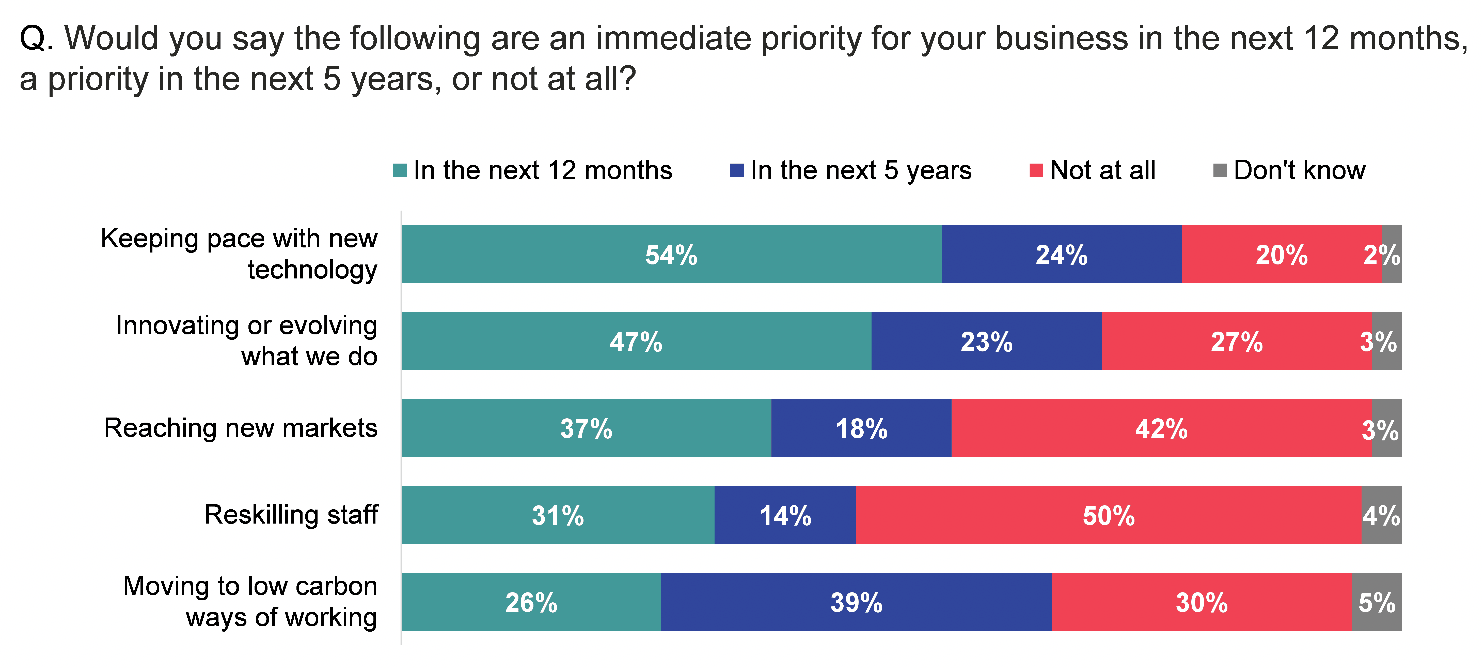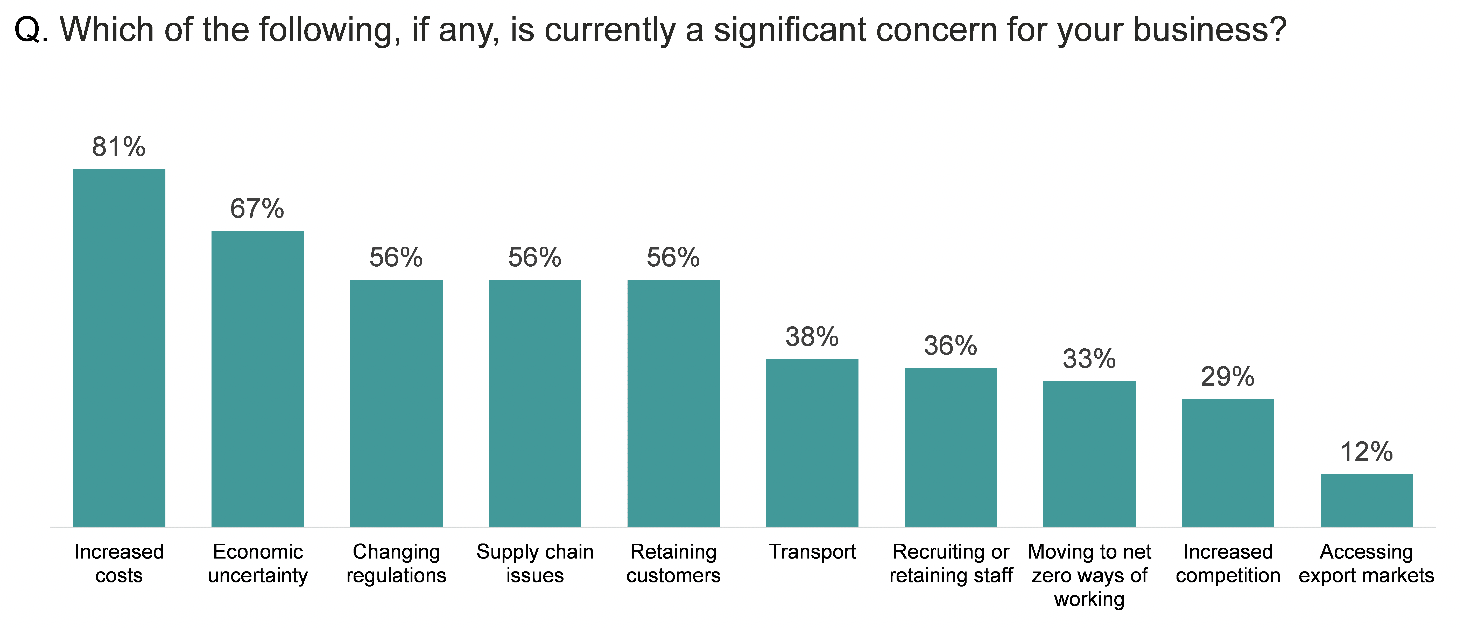Rural Scotland Business Panel survey: report
This report presents findings from the first Rural Scotland Business Panel survey carried out in October/November 2021.
3. Top priorities and concerns
Key findings
Of the five areas explored in the survey, top priorities for businesses over the next 12 months were keeping pace with new technology (54%) and innovating or evolving what they do (47%).
Moving to low carbon ways of working was least likely to be a priority within the next 12 months (26% said it was). A further 39% said it was a priority for the next 5 years, suggesting that businesses acknowledged the importance of the move to low carbon, but that other priorities were seen as more relevant or pressing in the short term.
Reaching new markets and reskilling staff ranked lowest overall, with around two in five saying these were not priorities.
The most significant concerns for businesses were increased costs (81%), followed by economic uncertainty (67%), changing regulations (56%), supply chain issues (56%) and retaining customers (56%).
Food and drink businesses had higher than average levels of concern with a wide range of issues. Certain concerns were also more prevalent among tourism businesses, those in remote rural locations, and those importing and exporting internationally.
Priorities
Of the five areas explored in the survey, the most common priorities for businesses over the next 12 months were keeping pace with new technology (54%) and innovating or evolving what they do (47%).
Where issues were seen as a priority, they were typically more of a priority in the short-term (within the next 12 months) than longer term (next five years). The exception was moving to low carbon ways of working, which was least likely to be a priority within the next 12 months (26% said it was), but a further 39% said it was a priority for the next 5 years. This suggests that businesses acknowledged the importance of the move to low carbon, but that other priorities were seen as more relevant or pressing in the short term.
Reaching new markets and reskilling staff ranked lowest overall, with around two in five businesses saying these were not priorities for them at all (42% and 50% respectively) (Figure 3.1)

Base: All buisinesses (2,726)
Variation in short term priorities
Businesses that viewed all of these factors as priorities in the short term (in the next 12 months), rather than the long term, tended to be:
- those that were trading outside of Scotland
- businesses striving for growth, and
- those that had seen their level of performance change (either higher or lower) since COVID-19.
Businesses which considered keeping pace with new technology as a top short term priority included creative industries (64%) and financial and business services (64%).
Innovating or evolving was seen as a top short term priority for tourism businesses (56%) and large businesses with over 25 staff (60%). Large businesses also considered reskilling staff as a high short term priority (50%). See Appendix A for further variations.
Variation in longer term priorities
Food and drink businesses tended to consider these factors in the longer term, being more likely to say that each of the following was a priority in the next five years:
- moving to low carbon (49%),
- keeping pace with technology (34%),
- innovating (32%),
- reaching new markets (27%), and
- reskilling staff (18%).
Sole traders were more likely than employers to say that these factors were not a priority:
- reaching new markets (53% saying "not at all" compared with 39%),
- moving to low carbon (41% vs 27%),
- innovating (37% vs 24%), and
- keeping pace with new technology (27% vs 18%).
Concerns
The most significant concern for businesses was increased costs (81%), followed by economic uncertainty (67%), changing regulations (56%), supply chain issues (56%) and retaining customers (56%) (Figure 3.2). These top concerns reflected the economic context for the survey, taking place during a period of increased inflation, rising costs and disruption to the wider supply chain.

Base: All buisinesses (2,726)
Variation in concerns
Highlands and Islands businesses were more concerned than those in other areas about transport (45% vs 36% in South of Scotland and 35% in rest of rural Scotland) and recruiting or retaining staff (42% vs 34% and 35%).
Businesses whose highest concern was increased costs included food and drink (91%), remote rural businesses (84%), and island businesses (85%).
In contrast, businesses with a highest concern about economic uncertainty included tourism (76%), and those importing and exporting to international markers (75% and 71% respectively). See Appendix A for further variations.
Contact
Email: socialresearch@gov.scot
There is a problem
Thanks for your feedback